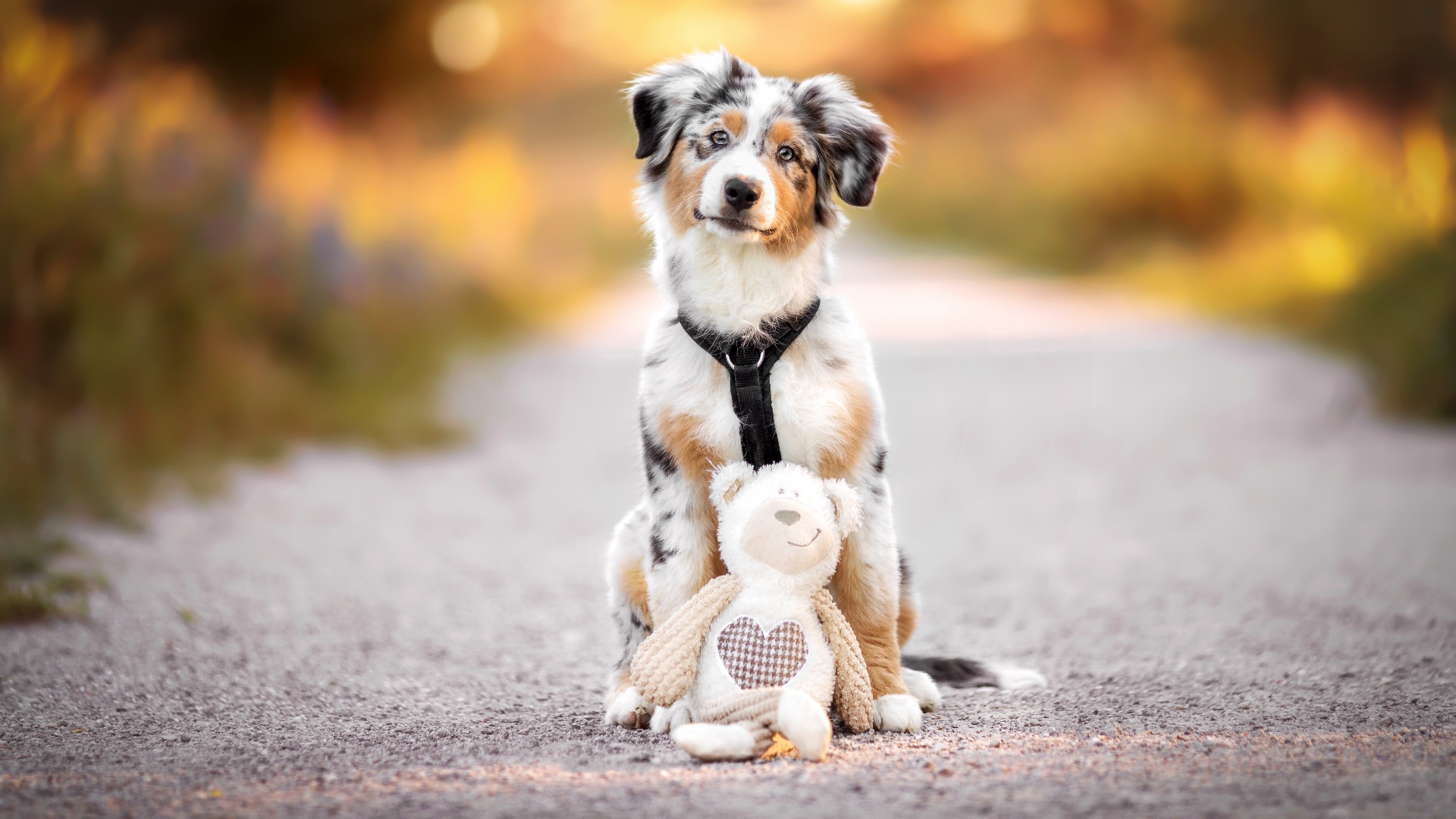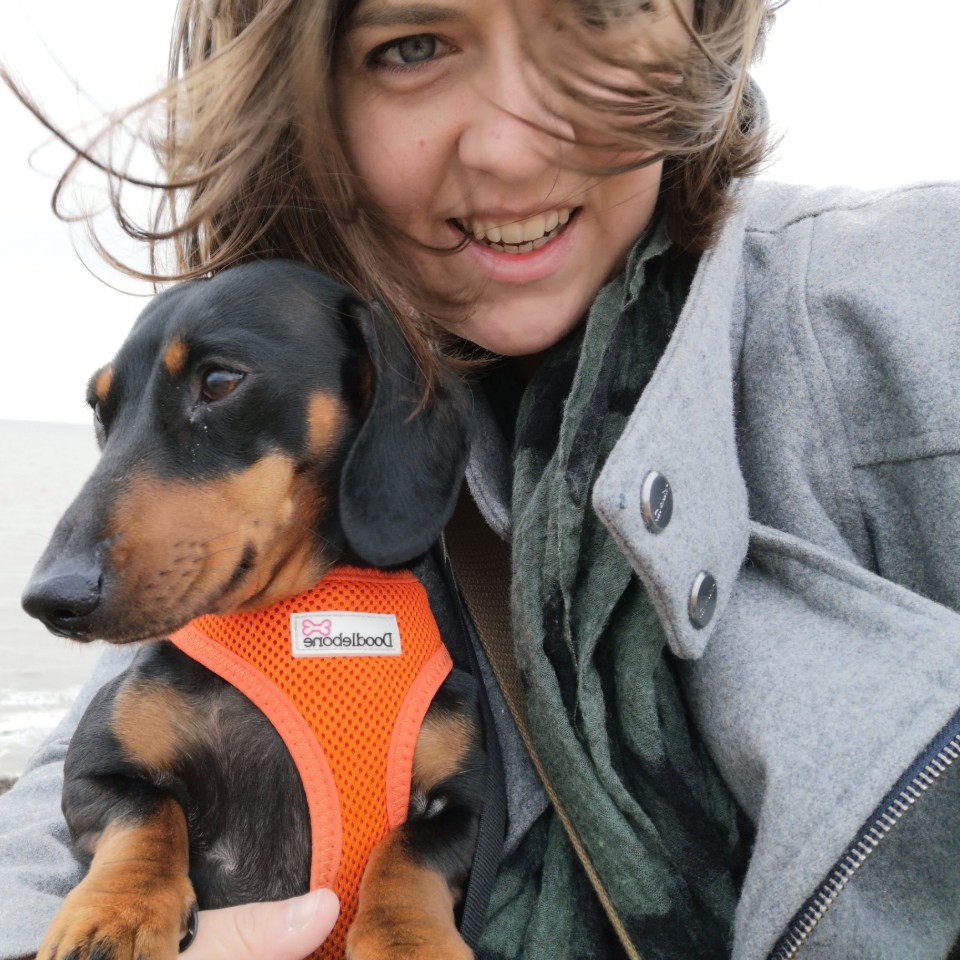How many toys should a puppy have?
How many toys should a puppy have? We’re getting to the bottom of how many is too many

How many toys should a puppy have? After all, when you welcome a new pup into your home you want your dog to feel comfortable, safe, and interested in their new surroundings.
But there are so many of the best puppy toys that it can be hard to know when to stop adding playthings to your pooch’s collection
Put simply, there is no one answer to how many toys a puppy should have. Any loving pet parent will want to have a good selection of toys to hand to make sure their four-legged animal gets all the physical and mental stimulation they need to thrive. But you don’t want to overwhelm them with choices.
So, generally speaking, investing in somewhere between 10-15 toys is a great goal to have in mind. This number will mean your pup has a wide range of toys to keep them entertained, without feeling like they don’t know where to start and what to play with first. But along with the number of toys, you’ll also want to give some thought to the kinds of playthings you bring into your home. For example, some toys are great for outdoor games like fetch or tug of war. While others will keep your pup happy and feeling safe and comfortable while catching up on some sleep.
To help you figure out what toys to add to your canine’s collection, we’re running through the quantity, quality, and type of toy you should be buying.
How many toys should I leave out for my puppy?
While there's no hard and fast rule when it comes to exactly how many toys you should leave out for your puppy at any one time, too many will simply overwhelm your puppy and leave them unsure as to which one to play with.
As we mentioned earlier, it's a good idea to only invest in 10-15 toys and to mix them up so that they all have their own purpose. For example, you might look at getting a few teething toys, some soft and comforting toys for snuggling, and a few outdoor toys that are good for playing fetch with. Once you've purchased your selection, stick to leaving out a few at a time and keep the others tucked away.
Get the best advice, tips and top tech for your beloved Pets
Speaking of which, it's also a good idea to have a designated “place” for your puppy’s toys – check out our inventive dog toy storage ideas or simply pop a box or crate in the corner of the room. You shouldn’t expect your dog to put the toys back in their place, but them knowing where to find them means they can rummage for new ones when they feel the urge to play, and you can hide them away neatly when they’re not in use.
Can you give a puppy too many toys?
In a sense, the answer is both yes and no. It’s difficult to “spoil” a puppy as such, but it’s a good idea not to give them so many toys that they can’t play with them all.
A good tip to help keep your puppy stimulated is to “rotate” the toys you give to them. Hiding away some of their toys and swapping them out for toys that they haven’t played with for a while helps keep things interesting and will stop your pup from getting bored.
It’s also a good idea to have just a few toys out at any one time to give your puppy a sense of boundaries – i.e. these are their toys for chewing and playing with, while everything else is not for them.
Should puppies have toys all the time?

Again, there’s not necessarily a definitive answer to this, as it will often come down to the traits of your dog, and how they use toys. There will be times when it's appropriate to let your puppy play and other times when it isn't.
If your puppy is very young, it's likely that they use toys to comfort themselves, especially the soft and cuddly ones which mimic the warmth they would have gotten from their mother. We don't recommend taking a favorite toy away from your puppy that they like to snuggle with unless it's absolutely necessary.
And sometimes, it is. If your puppy has been misbehaving, then rewarding them with a toy isn't a good idea. Likewise, if it's meal time or you're trying to get them ready to go for a walk, removing the toys will help your puppy learn that it's not always playtime.
You should always be mindful of your puppy being left alone with toys, especially if they are destructive or the toy you have has parts that may come loose and present a choking hazard. We recommend that wherever possible, you supervise your puppy during their play sessions.
Should I leave toys in my puppy’s crate?
Generally speaking, it’s not a good idea to leave toys in your puppy’s crate. If you have a very placid puppy on your hands who isn't much of a chewer, you might consider popping a toy in with them, but we don't recommend this. That's because most toys have stuffing or exterior parts that could either cause a blockage in the stomach if swallowed or present a choking hazard.
That said, if you really do want to leave toys in the crate, perhaps as a comforter, try to find toys that are particularly durable and designed to be long-lasting, making sure to check the toy over for any signs of damage after any time the dog has been alone in the crate with it. The best puppy sleep aids are a great choice when it comes to toys that can be placed alongside your fur baby in their crate.
Should puppies have soft toys?
There's no denying it, soft toys are super snuggly, cozy and comforting and can help your puppy to feel safe and secure. There's no reason to avoid giving your puppy a soft toy but just a word of caution – only let your puppy play with a soft toy when you're able to supervise them. You want your puppy to avoid swallowing or choking on small or detachable parts of a toy, or on the stuffing you will often find in soft toys.
To help teething puppies, look for durable toys that have been designed specifically with chewing in mind. The best teething toys for puppies come highly recommended for soothing sore gums and relieving some of the pain associated with new teeth breaking through.
You should also be mindful to not give your dog toys that are made for humans. Generally speaking, soft toys for children haven’t been designed with heavy destruction in mind, so they won’t usually withstand chewing, biting and clawing from a dog.
How many toys does the average dog have?

This is always a tricky question to answer because just like us humans, no two dogs are the same. Some puppies absolutely adore toys and would quite happily surround themselves with hundreds of playthings if given half the chance. Others aren't that big on toys and will be more than satisfied with just a few tried and true favorites.
If you’re concerned that your dog has more toys than average – well, simply, don’t worry. There’s no right or wrong answer to how many toys your puppy should have – it all comes down to your individual needs (and that of your puppy’s).
That said, a good rule of thumb is about 10-15 toys, which are swapped and changed around at regular intervals, giving your dog plenty of variety. You might find that as they get older, your dog needs fewer toys than when they were a puppy – but generally, you’ll get to know what is right for your dog.
What toys should you not give a puppy?
When you go to the pet store, you will see a huge variety of different toys, some of which are specifically geared towards puppies, and plenty that are intended for any age of dog, or particularly for older dogs.
The majority of the best dog toys you can buy for dogs are perfectly safe for puppies, but there are a few things you should be mindful of. For example, it’s wise not to give a puppy anything which is stuffed with beads or beans, anything which contains batteries or anything in which a small animal could get themselves trapped or stuck.
If in doubt, go for toys that have specifically been sold or recommended for puppies, and always supervise your puppy when they’re playing with a toy – especially for the first time.
What toys should a puppy have?
When it comes to puppy toys, variety really is the spice of life. Puppies need a range of toys that meet their different needs and help to keep both their developing bodies and brains active.
When shopping for puppy toys, try to get lots of different sizes, shapes, sounds and textures and you should keep your dog happy. You could also invest in the best brain games for dogs to provide a good amount of mental stimulation, too.
You’ll find lots of different toys available, but consider balls, at least one squeaky toy, something soft, something specifically designed for chewing and teething, and perhaps something you can hide treats in as this will provide a good range of enrichment and stimulation.
Need advice on how to play with a puppy? We spoke to a vet to find out the dos and don’ts of playing with your pooch. Alternatively, find the best puppy food or our guide to homemade puppy teething toys.
Amy Davies is a freelance writer and photographer with over 15 years experience. She has a degree in journalism from Cardiff University and has written about a huge variety of topics over the years. These days she mostly specialises in technology and pets, writing across a number of different titles including TechRadar, Stuff, Expert Reviews, T3, Digital Camera World, and of course PetsRadar. She lives in Cardiff with her dog, Lola, a rescue miniature dachshund.

